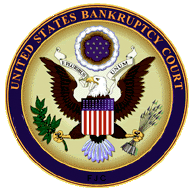Title 11 of the United States Code
| Bankruptcy in the United States |
|---|
 |
| Bankruptcy in the United States |
| Chapters |
| Aspects of bankruptcy law |
Title 11 of the United States Code, also known as the United States Bankruptcy Code, is the source of bankruptcy law in the United States Code.[1]
Contents
Title 11 is subdivided into nine chapters. It used to include more chapters, but some of them have since been repealed in their entirety. The nine chapters are:[2]
- Chapter 1 - General Provisions
- Chapter 3 - Case Administration
- Chapter 5 - Creditors, the Debtor and the Estate
- Chapter 7 - Liquidation
- Chapter 9 - Adjustment of Debts of a Municipality
- Chapter 11 - Reorganization
- Chapter 12 - Adjustment of Debts of a Family Farmer or Fisherman with Regular Annual Income
- Chapter 13 - Adjustment of Debts of an Individual with Regular Income
- Chapter 15 - Ancillary and Other Cross-Border Cases
References
- ↑ U.S. Code Title 11
- ↑ "United States Code". Office of the Law Revision Counsel. Retrieved November 24, 2015.
Further Reading
United States Bankruptcy Code; 2016 Edition. ISBN 9781942842033.
External links
- United States Bankruptcy Code via usbankruptcycode.org
- U.S. Code Title 11, via United States Government Publishing Office
- U.S. Code Title 11, via Cornell University
| Title 11 of the United States Code: Bankruptcy | |||
|---|---|---|---|
| 2007 Filings | 2008 Filings | 2009 Filings | |
| Chapter 7: Liquidation | 413,294 | 560,015 | 819,362 |
| Chapter 11: Business reorganization | 5,199 | 6,971 | 11,785 |
| Chapter 12: Family farmers & fishermen | 372 | 343 | 367 |
| Chapter 13: Individual reorganization | 276,649 | 334,551 | 370,875 |
This article is issued from Wikipedia - version of the 11/22/2016. The text is available under the Creative Commons Attribution/Share Alike but additional terms may apply for the media files.